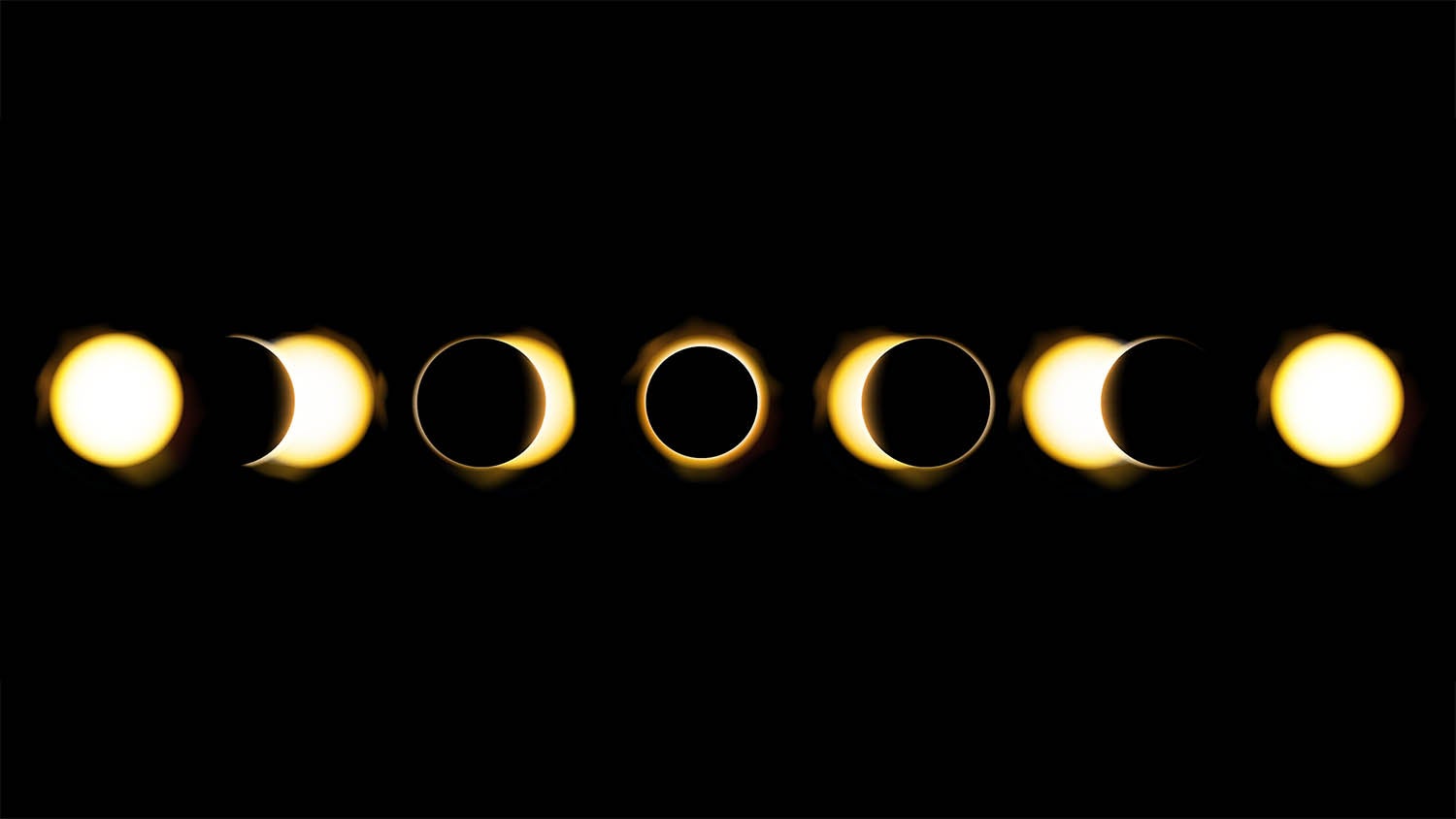Saturday, October 14, 2023 marks the next "Ring of Fire" annular solar eclipse. An annular solar eclipse occurs when the moon passes between the sun and Earth, and the moon is at or near its farthest point from Earth. Since the moon is farther away it doesn’t completely cover the sun, so not a “total” eclipse, but you’ll see a bright ring from the sun that shows around the moon. The October 14 annular solar eclipse will cross North, Central and South America. In the United States, it will begin in Oregon at 9:13 a.m. PDT and end in Texas at 12:03 p.m. CDT, giving many photographers the opportunity to get out to capture it with their Sony Alpha cameras. We’ve gathered some resources below to help you learn more about where to see the eclipse and how you can capture successful photos and videos of it.
The dramatic "Ring of Fire" annular eclipse will give you the chance to go out & make some otherworldly images. We have tips on how to do it.
Eclipse Resources From The Alpha Universe
Sony Artisan Patrick Murphy-Racey has photographed an eclipse in the past, and here he shares the setups he took to capture both still images and 4K video. He also shares his special third setup for capturing the totality “wedding ring” shot. Plus, get his advice on the importance of using a front filter to protect your lens and sensor. Read more in A Long-Lens, Three-Camera Approach To The Eclipse.
You can’t just run out with your gear to capture the eclipse, you have to plan ahead in order to properly protect your camera, lens…and even yourself. To successfully photograph this exciting natural phenomenon, you need to plan your location, protect your eyes with solar eclipse glasses, and choose the proper gear and protect it as well. There are many resources to help you get the photographs you want – and safely. Read more in What You Need To Know To Safely Capture The Solar Eclipse.
Creators Dan Marker-Moore and Mike Meyers chased the 2019 total solar eclipse to a remote mountaintop in South America. During the event, they captured stills, video and a timelapse with their Sony Alpha cameras. In this article they discuss the various setups they used to capture the eclipse close-up at totality, wide at totality, in a timelapse of totality through sunset, a close up timelapse/video of totality, a time slice image, plus behind the scenes of the entire thing. How in the world did they do it all? Read more in Eclipse 2019: Capturing Totality and In Search of Totality: How A Pair Of Creatives Are Capturing The 2019 Total Eclipse.
You might have quite a few questions before going out to capture a solar eclipse. How does a solar eclipse work? Will the weather cooperate? What lens and camera settings should I use? Find the resources to answer these and more in Your Last Minute Foolproof Eclipse Guide.
So you’ve captured your eclipse images…now what? Sony Artisan and photo editor extraordinaire Matt Kloskoswki shows how you can edit your eclipse photos, including ways to creatively set up your shots to make something interesting and ways to create popular composites for social media and more. Read more in Editing Eclipse Photos.

Photo by Matt Kloskowski
Other Eclipse Resources
The annular eclipse doesn’t last for long, so it’s important to be ready to shoot well ahead of its start to ensure you don’t miss it. You can learn more about the October 14 eclipse’s path and what time it might be happening near you in this article from NASA.
For another timeline of the eclipse’s path and more information about who all will be able to see it in the United States, check out this additional eclipse information from TimeandDate.com.
You definitely need to have solar eclipse glasses during the event in order to protect your eyes. You can find a complete list of manufacturers and authorized dealers of eclipse glasses and handheld solar viewers that are compliant with the ISO 12312-2 international safety standard in this article from the American Astronomical Society (AAS).
When will the next total solar eclipse take place? You won’t have to wait long, it’s on April 8, 2024. See information on where you can see the next one, plus every total solar eclipse through the year 2066 in this article from Time.com.
Share your eclipse images in the Alpha Universe Community Forum and on social media with #SonyAlpha.



